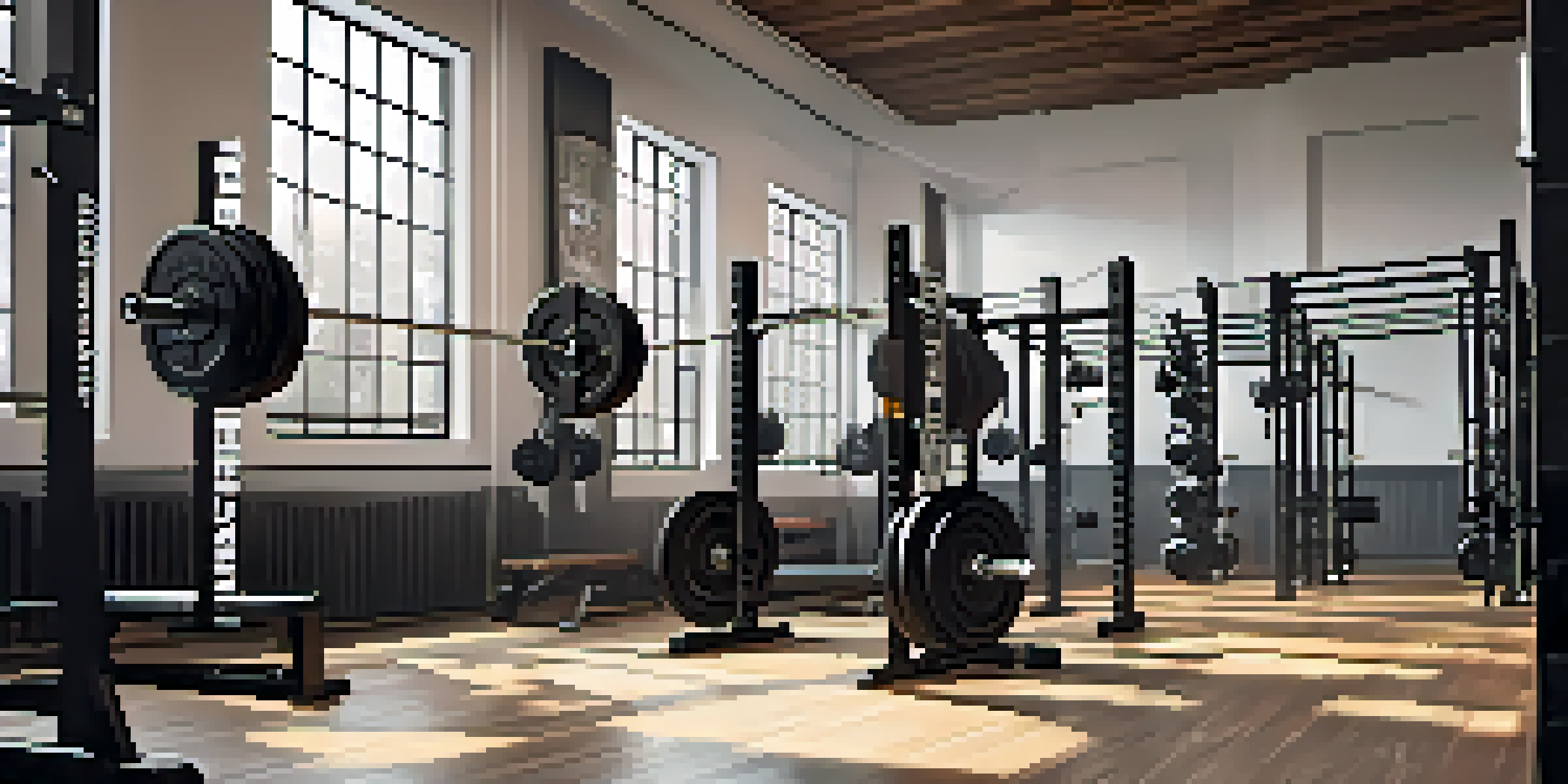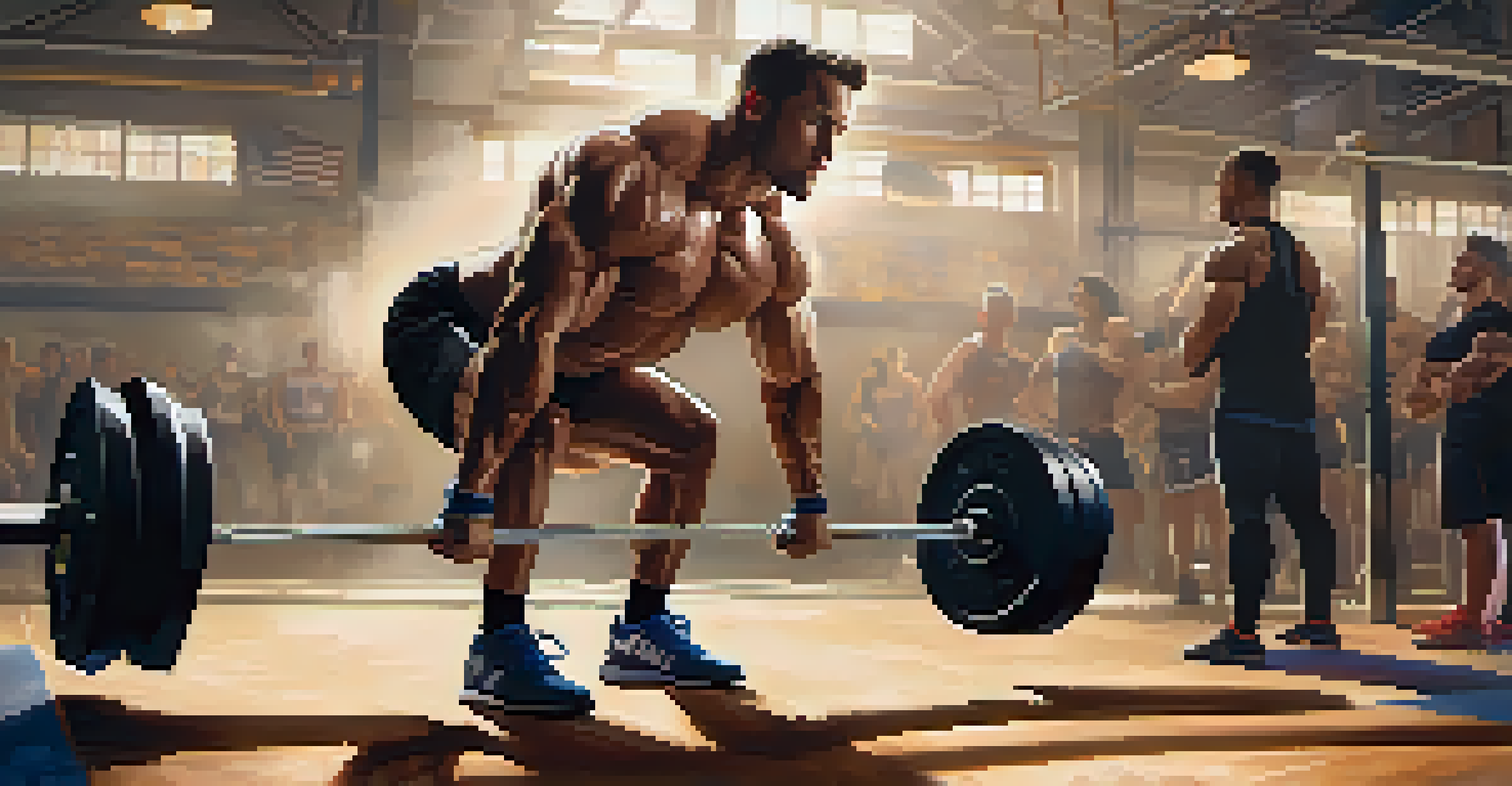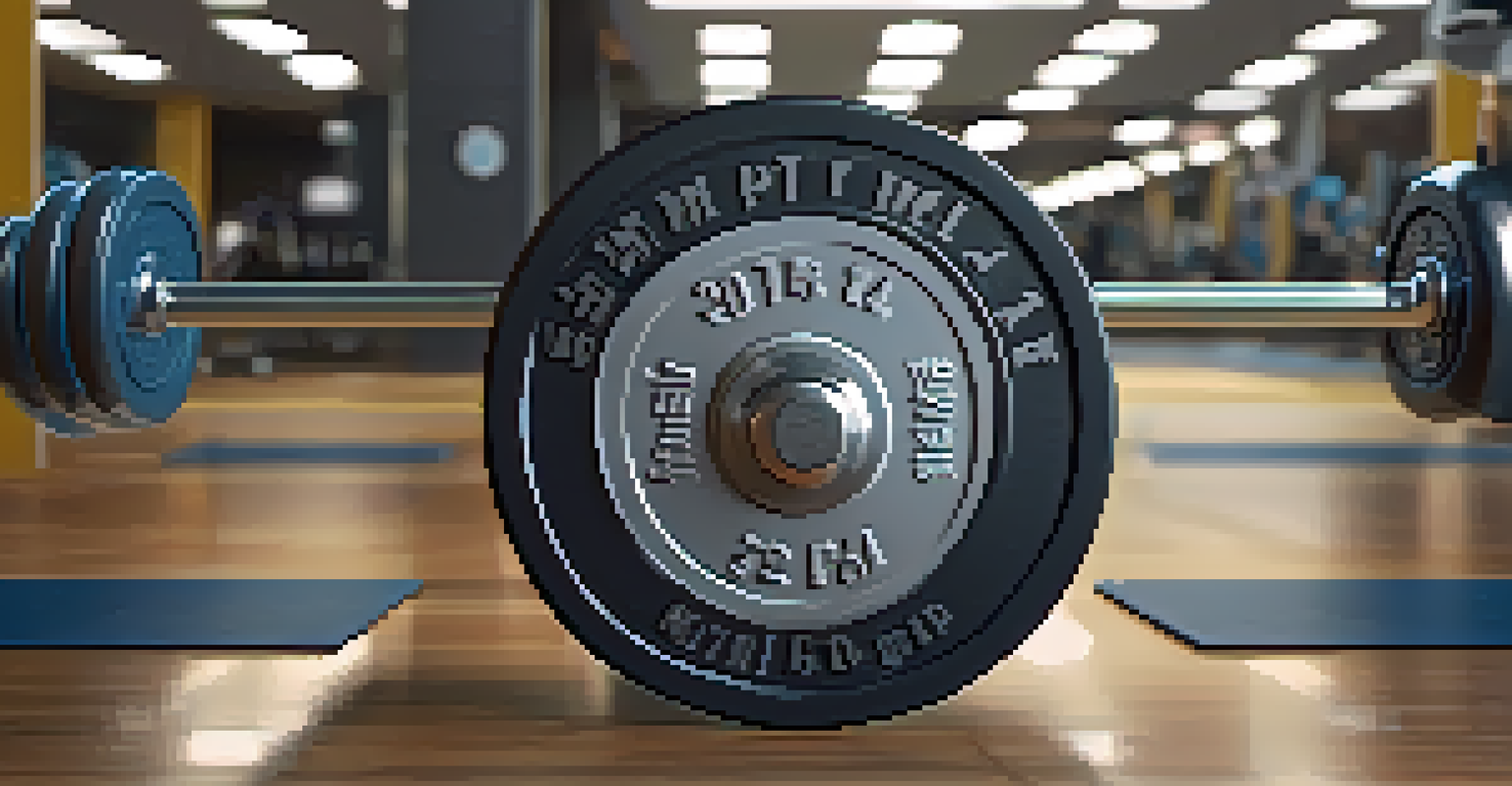Intermediate Powerlifting Programs: Leveling Up Your Gains

Understanding the Intermediate Powerlifting Stage
As you transition from beginner to intermediate powerlifting, your training needs evolve. At this stage, you've likely mastered the basic lifts and can handle heavier weights. This is where you start to focus on refining your technique while increasing your overall strength.
The only bad workout is the one that didn’t happen.
The intermediate phase typically involves more complex programming that includes variations of the main lifts. You might incorporate accessory exercises that target weak points, allowing for more balanced muscle development. This is crucial for avoiding plateaus and ensuring continuous progress.
Remember, the goal is to build upon what you’ve learned as a beginner. With a solid foundation, you can now explore different training methodologies, like periodization, which will help you maximize your strength gains efficiently.
Key Components of an Intermediate Program
An effective intermediate powerlifting program consists of several key components: specificity, volume, intensity, and recovery. Specificity means focusing on the main lifts—squat, bench press, and deadlift—while tailoring your training around them. This helps in achieving optimal performance during competitions or personal records.

Volume and intensity are crucial as you begin to lift heavier weights. Balancing these two factors allows you to push your limits without risking injury. For instance, you might have higher volume days focusing on sets and reps, while intensity days focus on lifting heavier weights for fewer reps.
Evolve Your Training Approach
Transitioning to intermediate powerlifting requires a focus on technique, complex programming, and accessory exercises to avoid plateaus.
Lastly, don’t underestimate the importance of recovery. Your muscles need time to repair and grow stronger. Incorporating rest days and active recovery sessions will help you avoid burnout and keep your training sustainable over time.
Choosing the Right Program for Your Goals
When selecting an intermediate powerlifting program, it’s crucial to align it with your specific goals. Are you aiming to improve your overall strength, or are you preparing for a competition? Different programs cater to various objectives, so understanding your goals will help you choose wisely.
Strength does not come from physical capacity. It comes from an indomitable will.
For instance, if your focus is on increasing your squat, look for programs that prioritize squatting frequency and accessory work that targets leg strength. Conversely, if you're preparing for a competition, you might want a program that simulates meet conditions more closely, with specific peaking strategies.
Ultimately, the best program is one that not only matches your goals but also fits your lifestyle. Consistency is key in powerlifting, so choose a program that you can stick to in the long run, keeping motivation high.
Incorporating Accessory Lifts for Better Performance
Accessory lifts play a vital role in an intermediate powerlifting program. These exercises help strengthen the muscles that support your main lifts, enhancing your overall performance. Think of them as the foundation that supports the structure of your training.
For example, if you’re looking to improve your bench press, incorporating exercises like tricep extensions and incline dumbbell presses can help build the necessary strength. Similarly, for squats, consider adding lunges or leg presses to target your quads and glutes more effectively.
Key Components for Success
An effective intermediate program includes specificity, balanced volume and intensity, and a strong emphasis on recovery.
By integrating accessory lifts, you create a well-rounded program that addresses weaknesses and imbalances. This not only boosts your main lifts but also helps prevent injuries, allowing you to train harder and more effectively.
Progress Tracking: The Key to Continuous Improvement
Tracking your progress is essential in an intermediate powerlifting program. Keeping a detailed log of your workouts enables you to see how far you've come, as well as identify areas that may need improvement. It’s like having a roadmap that guides you towards your strength goals.
Consider noting your weights, sets, and reps, along with any personal notes about how you felt during each session. This information can be invaluable when adjusting your program or identifying patterns in your performance over time.
Moreover, tracking helps keep you accountable. When you see the numbers going up, it fuels your motivation. Celebrate those small victories along the way—they're all part of your journey towards becoming a stronger lifter.
Nutrition's Role in Powerlifting Success
Nutrition is a cornerstone of any successful powerlifting program. As you increase your lifting intensity, your body requires more fuel to recover and grow. Eating a well-balanced diet rich in protein, carbohydrates, and healthy fats will support your training efforts.
For instance, protein is crucial for muscle recovery, while carbohydrates provide the necessary energy for your workouts. It’s helpful to think of your meals as fuel for your workouts—what you put in directly impacts your performance and recovery.
Nutrition and Mindset Matter
Proper nutrition and a strong mental approach are essential for maximizing performance and achieving success in powerlifting.
Don’t forget to stay hydrated as well! Water plays a vital role in muscle function and recovery. Being mindful of your nutrition will not only enhance your gains but also keep your energy levels high throughout your training.
Mental Preparation and Mindset for Lifters
The mental aspect of powerlifting is just as important as the physical. Developing a strong mindset can significantly influence your performance and overall success in the sport. Visualization techniques, for instance, can help prepare you for your lifts, allowing you to mentally rehearse your technique and approach.
Additionally, embracing a growth mindset is essential. Understand that progress may come with its ups and downs, and setbacks are part of the journey. Instead of seeing challenges as failures, view them as opportunities to learn and improve.

Finally, consider the power of community. Surrounding yourself with fellow lifters can provide encouragement and motivation, making the training process more enjoyable. Sharing experiences and tips can lead to a stronger, more resilient mindset.